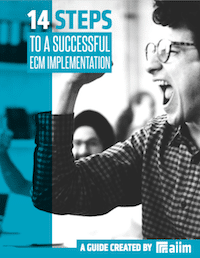The AIIM Blog
Keep your finger on the pulse of Intelligent Information Management with industry news, trends, and best practices.
Artificial Intelligence (AI) | Data Management | Metadata
Your organization sits on a goldmine of unstructured data—documents, emails, images, reports—that remains largely untapped. Knowledge Enrichment is the key to unlocking this treasure trove, transforming scattered information into structured, contextual knowledge that powers intelligent automation and drives business success. A new white paper from Hyland "Knowledge Enrichment: Transforming Unstructured Data for Agentic AI and Intelligent Solutions" explains how to use knowledge enrichment to elevate dark data and gain a competitive advantage.
Share
Artificial Intelligence (AI) | Metadata
Learn about paradata and how it can be used for documenting AI processes. This special guest blog post was authored by: Patricia C. Franks, School of Information, San Jose State University, California, USA Scott Cameron, School of Information, University of British Columbia; Vancouver, Canada
Share

Making an ECM implementation successful requires planning and attention to detail. The best way to create the right solution is to identify organizational goals and priorities. Learn how to manage a successful implementation in our free guide.
As the amount of data entering the organization proliferates, and the amount of content with business value (deemed a “record” in many cases) also increases, organizations everywhere are struggling with a massive information overload problem. Content is running rampant and sprawling, and records are being captured improperly, making discoverability and the resulting value of that information significantly lower.
Share
Metadata resides at the center of many of the essential aspects of content management. In addition to helping organize and classify content, Metadata enables good findability, can trigger workflow and transactional processes, reveals document usage patterns and history, and helps establish retention and disposition events. So far in our exploration of Metadata, we've answered some of the big questions already, including: What is Metadata? What is the business value of Metadata? How do I develop a Metadata strategy? Today, we'll be taking the next step and exploring how to build your Metadata plan. Let's get started!
Share
What’s the Importance of a Metadata Strategy? Many organizations use metadata in ways that provide significant business value. Every system uses metadata to store and retrieve data. But in too many organizations, every system uses similar but different metadata, with the result that different data structures and approaches make information harder to find and manage, not easier. Take a simple example of an employee name: In one system, it’s “first name last name.” In another, it’s “last name, (comma) first name.” And in still another, it’s two fields: “First name” and “Last name.”
Share
Information needs context, and we need to provide that context in a way that doesn't burden users but instead supports them. This means we need to take full advantage of recognition and analytics technologies to streamline and automate how we develop that context. One such tool is Metadata. Metadata offers significant benefits in terms of understanding information in new ways and in being able to leverage that intelligence to drive innovation and the customer experience.
Share